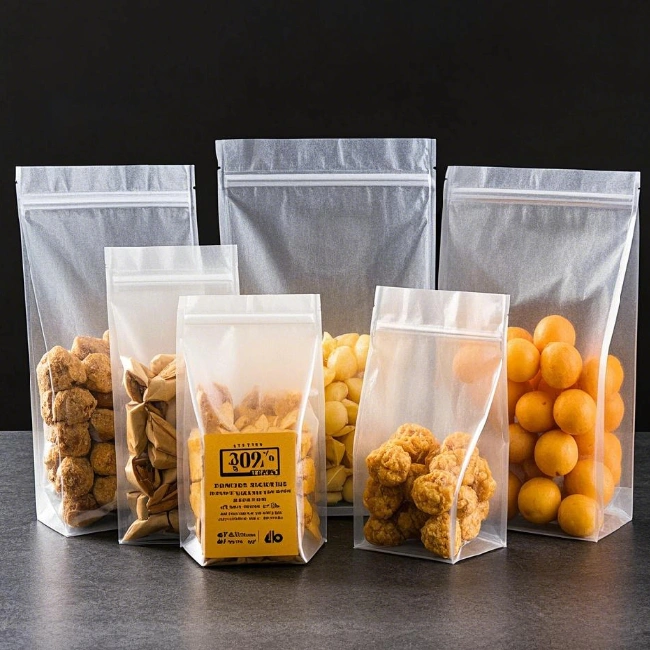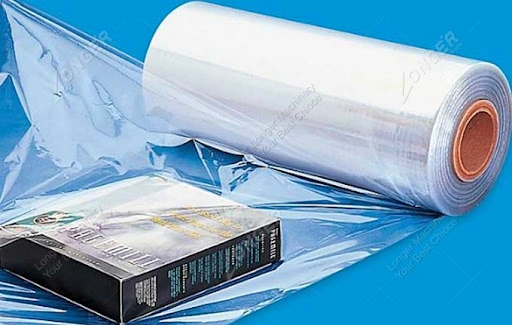In our modern-day consumer-driven society, packaging plays a crucial role in protecting and presenting products. Among the various packaging materials available, cellophane bags have gained significant popularity. They are frequently used in supermarkets for wrapping fresh produce, in bakeries to package delicious pastries, and on gift-giving occasions to add an elegant touch.
Are cellophane bags biodegradable? This not only impacts our daily choices as consumers but also has far-reaching consequences for the health of our planet.
What Are Cellophane Bags?

Cellophane bags are thin, transparent, and flexible packaging materials. They are known for their excellent clarity, which allows consumers to easily see the contents inside. This transparency is a major advantage, especially in the food industry, as it enables customers to assess the quality and freshness of the products.
Cellophane is primarily made from cellulose, a natural polymer that is abundant in plants. The production process involves treating cellulose with chemicals to transform it into a thin film. This film is then formed into bags of various sizes and shapes to meet different packaging needs. The resulting cellophane bags are lightweight, yet they possess a certain degree of strength, making them suitable for a wide range of applications.
The Principles and Standards of Biodegradability

Biodegradation is a natural process by which organic materials are broken down into simpler substances by the action of microorganisms such as bacteria, fungi, and algae. During this process, the complex polymers in the material are gradually decomposed into water, carbon dioxide (or methane in anaerobic conditions), and biomass.
The standards for biodegradability are quite strict. In general, a material is considered biodegradable if it can decompose to a significant extent within a relatively short period in a specific environment. For example, in a composting environment, which is rich in microorganisms and has optimal temperature and humidity conditions, a biodegradable material should break down by at least 90% within six months to one year. Additionally, the degradation products should not be harmful to the environment. These standards are set to ensure that biodegradable materials truly contribute to reducing environmental pollution.
Analysis of the Biodegradability of Ordinary Cellophane Bags

Traditional cellophane bags, although made from cellulose, may not always be fully biodegradable. Some ordinary cellophane bags may contain additives or coatings that can slow down the degradation process. For instance, certain types of cellophane bags are coated with a thin layer of plastic or wax to enhance their water-resistance or durability. These coatings can prevent the easy access of microorganisms to the cellulose, thus impeding biodegradation.
In the natural environment, the degradation of ordinary cellophane bags can be a slow process. If left in a landfill, where conditions are often anaerobic (lacking oxygen), the degradation time can be significantly extended. Even in more favorable aerobic environments, the presence of additives may still cause the bags to take several years to decompose completely. This long-term persistence in the environment contributes to the growing problem of waste accumulation.
The Rise of Biodegradable Cellophane Bags
With the increasing awareness of environmental issues and the push for sustainable living, the demand for biodegradable alternatives has surged. Biodegradable cellophane bags have emerged as a promising solution. These bags are designed to overcome the limitations of traditional cellophane bags in terms of biodegradability.
They are typically made from 100% natural and renewable sources of cellulose, without the addition of harmful or non-biodegradable substances. The manufacturing process is also optimized to ensure that the final product can easily break down in the environment. For example, some biodegradable cellophane bags are produced using special techniques that make the cellulose more accessible to microorganisms, accelerating the degradation process.
The Advantages of Biodegradable Cellophane Bags

Environmental friendliness
Biodegradable cellophane bags are a boon for the environment. When they are discarded, they can decompose naturally, reducing the amount of plastic waste that accumulates in landfills, oceans, and other natural habitats. This helps to prevent the pollution of soil and water sources, protecting the ecosystem and the countless species that depend on it. By choosing biodegradable cellophane bags, we can significantly contribute to the global effort to combat environmental degradation.
Safety
In the food packaging industry, safety is of the utmost importance. Biodegradable cellophane bags are non-toxic and do not leach harmful chemicals into the food. Since they are made from natural materials, there is no risk of consumers being exposed to potentially dangerous substances. This makes them a reliable choice for packaging everything from fresh fruits and vegetables to ready-to-eat snacks.
Market Prospects
Consumers today are more environmentally conscious than ever before. They are actively seeking out products that are sustainable and eco-friendly. As a result, businesses that use biodegradable cellophane bags can gain a competitive edge in the market. These bags not only appeal to the values of consumers but also demonstrate a company’s commitment to environmental responsibility, which can enhance brand image and customer loyalty.
What is the Difference Between Cellophane and Plastic Bags?

Cellophane and plastic bags have several differences. Cellophane is made from natural cellulose, while plastic bags are typically derived from petroleum-based polymers.
Cellophane is biodegradable under certain conditions, reducing environmental impact, while many plastic bags are non-biodegradable and persist in the environment for a long time. Cellophane has better transparency and a natural look, and plastic bags can be more diverse in color and texture. In food packaging, cellophane is often favored for its safety and breathability.
Why is Cellophane Not Recyclable?

Cellophane is generally considered non-recyclable mainly due to its production process and chemical properties. During manufacturing, natural cellulose is treated with various chemicals to form a thin film. These chemical treatments alter the structure of cellulose, making it difficult to separate and purify in traditional recycling facilities.
Cellophane often contains additives that further complicate the recycling process. As a result, it’s challenging to recycle cellophane into new products in an efficient and cost-effective manner, which is why it’s not commonly recycled like some other materials.
Conclusion
In conclusion, the biodegradability of cellophane bags is a complex topic. While traditional cellophane is made from natural sources and is biodegradable, certain types with added coatings or synthetic elements may not break down as easily. Understanding the material composition is crucial. If you’re environmentally conscious and in need of packaging, consider sourcing from reliable providers. At BN Pack, we offer a wide range of high-quality, biodegradable cellophane bags in wholesale. Take action now and reach out to us to make a sustainable choice for your packaging needs.
At BN Pack, we specialize in custom organic food packaging solutions that meet your specific needs. From eco-friendly materials to unique designs and full-color printing, we offer a variety of options to help your products stand out. Our team will work closely with you to ensure your packaging meets your brand and regulatory requirements, providing solutions that enhance your product’s quality and market appeal. Contact us for more information.
